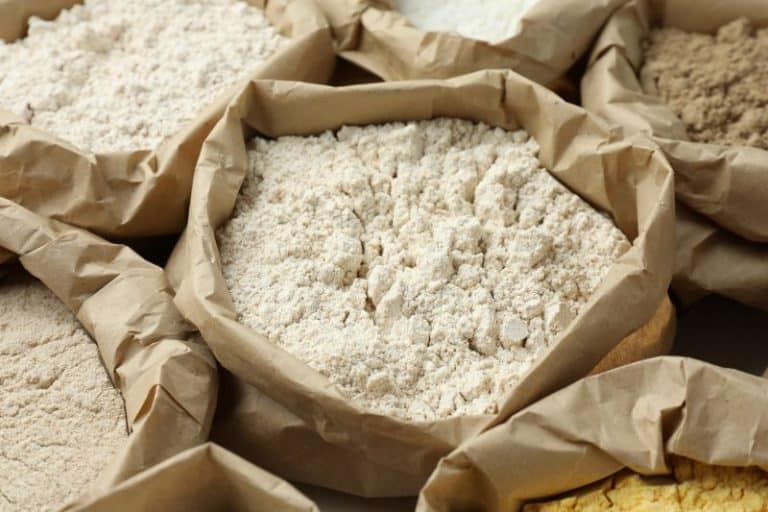Flour Nutrition Variation – Why Every Product’s Different

When it comes to calculating the nutrition information for product recipes, using McCance & Widdowson’s ‘Composition of Foods’ integrated dataset (CoFID) for raw, natural ingredients such as fruit and vegetables will yield accurate data results.
However, if you’re calculating the nutrition for baked goods featuring flour as an ingredient, for the highest accuracy you should always enter your own flour, as there can be a big difference between its dataset and that of the like-for-like flour dataset in CoFID.
There are a number of factors which can cause this flour nutrition variation in data, to do with how the flour is produced, processed and sourced.
As an example of this, let’s compare the McCance & Widdowson dataset for white, wheat, self-raising flour with the like-for-like ‘own brand’ flours of two major UK supermarkets.
Both supermarket products are British wheat flour, sold in 1.5kg bags, and a similar price.
This flour type is commonly used in manufacturing baked goods such as cakes, biscuits and scones etc.

In the nutrition information table above comparing the like-for-like flours’ nutrients per 100g, you can see that the energy ranges from 339 calories to 352 calories.
Fat content ranges from 1.2g to 1.6g, of which Saturates ranges from 0.2g to 0.4g.
Carbohydrate ranges from 70.1g to 73g, of which Sugars ranges from 0.3g to 1.2g.
Fibre ranges from 3.2g to 4g.
Protein ranges from 9.7g to 10.4g.
Salt ranges from 0.65g to 0.85g.
Whilst the McCance & Widdowson dataset has the highest values of the 3 flour examples for Saturated Fat, Fibre, and Salt, it’s somewhere in the middle for Fat, Carbohydrate, and Carbohydrate Sugars, and the lowest for Protein.
This means using it for your recipe ingredient data could result in some nutrient values (as part of the overall recipe nutrient totals) inaccurately being too high, and some being too low.
Plus, obviously if you’re using more than 100g of flour ingredient in your product recipe, the level of data inaccuracy will further increase.
For ensuring the highest accuracy of results with these types of ‘variable’ ingredients, if you use our NutriCalc software to calculate and output the nutrition information for your product recipes, you can enter flour and any other ingredients as custom ingredients.
Simply look at your ingredient’s supplier specification sheet, website product information, or the label itself, and find the available nutrition information (as above, so Energy, Fat, Carbohydrate, Fibre, Protein, and Salt, plus other nutrients are often provided).
Then in the NutriCalc software, select ‘New Ingredient’ and enter the nutrition information in the Nutrients tab.
As well as the ability to enter your own custom ingredients, there are thousands of quality ingredient entries in its database as standard.
For more information, please get in touch or watch our adding custom ingredients demo video.
To view our full list of expert paper articles, visit here.
